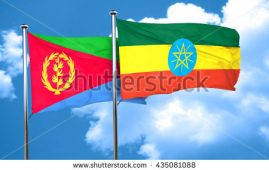[By: Lion Lepalo Gideon – Save Lake Turkana Campaign Project]
The proposed building of Gibe 3 Dam by Ethiopia will cause a radical reduction of inflow of water into Lake Turkana in Kenya, according to an Independent Environmental Impact Assessment (EIA) done by the (Africa Resource Working Group ARWG). Not only is the dam an environmental disaster waiting to happen, planning tendering and everything that comes with it has been flawed to say the least. Wangari Kihara (Communications Manager, National Environmental Management Authority) says that the Authority plans to carry out an independent environmental impact assessment to countercheck the one done by Ethiopia.
With the vanishing of the lake, the Elmolo people, their culture and spirituality will be extinct. The outgoing E. U. Boss Eric Van Der Liden recognizes that the Elmolo community is marginalized because they are the smallest community in Kenya.
The Kenya Government should concentrate on other renewable energy sources such as Geothermal, Solar, and more so wind power and Loiyangalani District being home to Africa’s Biggest Wind Farm Project [www. Lake Turkana Wind Power. Com] is an answer to the power cuts experienced in Kenya.
UNEP’s Executive Director, Dr.Achim Steiner, is now calling on the Ethiopia and Kenya governments to approach the construction of the Dams on River Omo with caution saying it is a delicate matter that requires sufficient assessment of the environmental Impact. Dr. Steiner further says that Kenya has the capacity to produce enough electricity to sustain its growing demand for power if it properly invests in the Wind Farm in Loiyangalani and does not need to rely on importing electricity from Ethiopia after the dam’s construction.
The use of Africa’s Lakes and rivers that feed or drain them is rapidly becoming a potential ground for conflict as water levels fall and the demand for electricity, fish and water for irrigation goes up. UNEP’s Atlas of African Lakes shows the drastic depletion of the continent’s major water bodies by comparing and contrasting past satellite images with contemporary ones. Many wars among pastoralist communities have been fought over water while global warming and reckless human activity have taken toll on the continent’s major lakes in the past decades. To complicate matters further, some of the biggest natural lakes in Africa are usually spread across national borders, which means the responsibility of ensuring the sustainable use of their waters is shared between nations.
Lake Chad is no more and it is probably the best illustration. Once Africa’s largest fresh water body supporting the livelihoods of about thirty million people in Cameroon, Chad, Nigeria and Niger, the Lake has shrunk by 90% from 25 000 square kilometers in the 1960’s to less than 1,3000 square kilometers today. Reduced rainfall, increased irrigation, the southward spread of the Sahara and heavy damming of Logone and Chari rivers, the two major sources of the Lake are cited as the main causes of this ecological catastrophe.
Although Kenya and Ethiopia suggest that the construction of Gibe 3 Dam will not change the total amount of water flowing into Lake Turkana, an independent group of European, American and East African Scientists under the African Resource Working Group (ARWG) insist that the dam will have a catastrophic impact on Lake Turkana and its people. The dam will retain 11 billion cubic metres of water, enough to reduce the level of the Lake by as much as four or five metres.
The government of Kenya has remained indifferent since it allegedly stands to benefit from the surplus power to be generated from the dam. A delegation of Kenya government officials led by the Director of water services, John Nyoro gave the project a clean bill of health after a two week fact-finding mission in Ethiopia in June 2009.
Future generations will judge us harshly for our apathy towards environmental conservation. All developing regions have experienced substantial environmental degradation over the Past decade which could very well worsen as a result of long term man made global climate change. Many countries are struggling because their natural resource base – especially the forests, fisheries, soil and water that survival and livelihood depend on is progressively being degraded. Each year, roughly 15 million hectares of forests are cleared generally in developing countries, resulting in increases in Vector-borne diseases, declines in the quantity and quality of water and more floods, landslides and local climate changes. The lack of good data and indicators on the environment hides the extent to which most developing regions have suffered extensive environmental degradation over the past decade and are not on track to achieving environmental sustainability.
Poor people lack the means to invest in the environment and the political power to limit damage to local resources resulting in nutrient depletion, deforestation overfishing and other environmental damages. This degradation undermines rural incomes and contributes to poor health and rural urban migration, and settlement in environmentally fragile peri-urban areas.
Countries should integrate environmental strategies into all sector policies and investment to reduce environmental degradation. Examples of direct investments in environmental management are replanting forests, treating waste water, curbing chemical pollution and conserving critical eco-systems. Well-designed sector strategies, including agriculture and infrastructure services can use strategic impact assessments to minimize negative environmental tradeoffs. The removal of environmentally damaging subsidies can further improve environmental management.
Climate change needs to be addressed urgently. Unless global warming slows down, the incidence of droughts and floods will likely increase vectorborne diseases. Many ecosystems such as mangroves and coral reefs will be put under great strain. In short achievements in the fight against disease, hunger, poverty and environmental degradation risk being unraveled by climate change.
* Originally published on The African Excutive, June 6-13, 2012 issue, titled ‘Lake Turkana: Set to dry’, authored by Lion Lepalo Gideon who is Executive Director, Save Lake Turkana Campaign Project.
*****************
Check the Gibe III dam archive for related posts.





